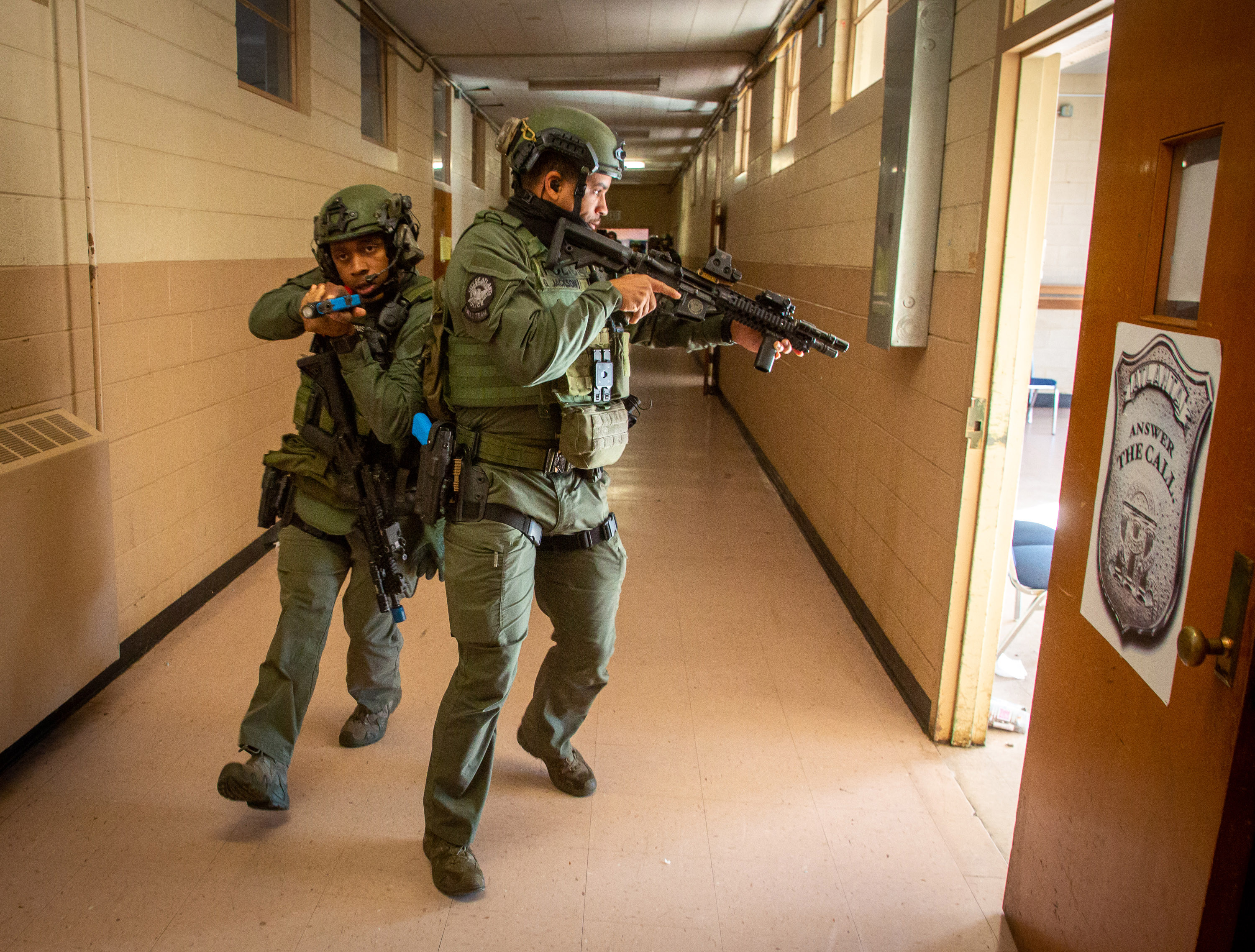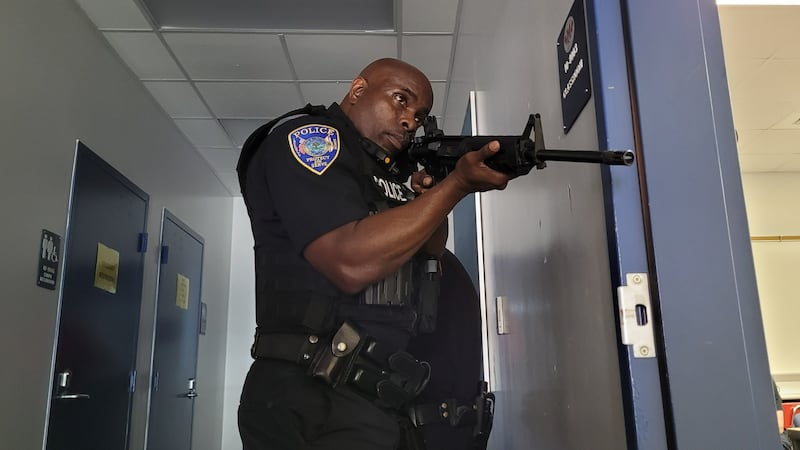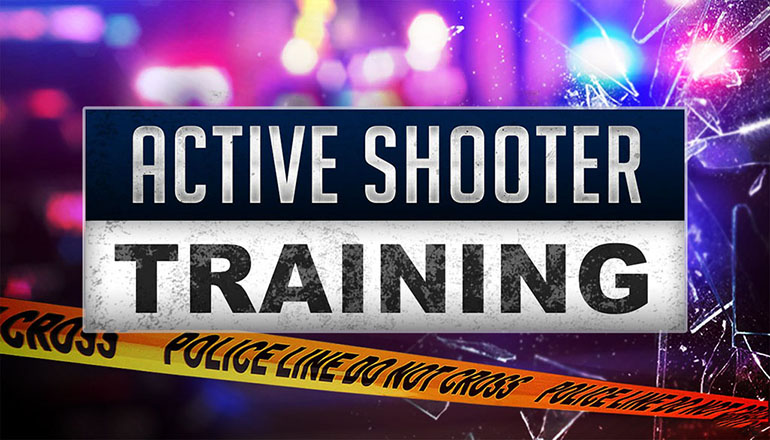Exactly How Active Shooter Training Boosts Emergency Action Readiness
Exactly How Active Shooter Training Boosts Emergency Action Readiness
Blog Article
Executing Active Shooter Training: Finest Practices for Creating a Safe and Prepared Neighborhood Atmosphere
As areas face the upsetting fact of energetic shooter occurrences, the implementation of thorough training programs ends up being necessary. What are the critical aspects that can transform a basic training program right into a durable model for area durability?

Recognizing the Need for Educating
In a period marked by boosting cases of violence in public rooms, understanding the requirement for energetic shooter training has never ever been much more critical. Extensive training campaigns can outfit participants with the knowledge and abilities to react decisively.
Moreover, the mental effect of physical violence on people and areas can not be overemphasized. Training cultivates a feeling of empowerment and preparedness, enabling individuals to really feel even more safe in their environments. It additionally promotes a culture of safety and security, where recognition and caution become integral components of life. The advantages of active shooter training extend beyond prompt reaction; they consist of enhancing communication protocols and improving general security measures within companies.
Key Parts of Effective Programs
Effective active shooter training programs incorporate numerous essential elements that improve preparedness and action capabilities. First, comprehensive curriculum advancement is essential, ensuring that training material matters, evidence-based, and tailored to the certain requirements of the company or area. This consists of understanding the dynamics of active shooter events and the mental influence on individuals involved.
Second, reasonable training situations must be employed to mimic prospective circumstances, allowing participants to exercise decision-making and feedback techniques in a regulated atmosphere. These drills facilitate muscle mass memory and construct self-confidence among participants.
Third, an emphasis on communication protocols is crucial. Developing clear lines of interaction among police, emergency situation responders, and participants guarantees coordinated feedbacks throughout an event. Regular updates and correspondence course help maintain communication pathways clear and effective.
4th, recurring assessment and comments systems need to be incorporated into the training program - active shooter training. Assessing the effectiveness of training with individual feedback and efficiency metrics enables for constant renovation
Last but not least, fostering a culture of safety and security and preparedness within the area urges watchfulness and proactive measures, guaranteeing that people are not just experienced but also involved in maintaining a safe atmosphere.
Engaging Area Stakeholders

To effectively involve these stakeholders, it is important to interact the objectives and advantages of the training. Organizing informative sessions can help make clear the training's objective, address issues, and lay out the duties each stakeholder helpful resources may play. Additionally, producing a stakeholder advising board can assist in recurring dialogue, permitting varied viewpoints and insights to be integrated into the training program.
Structure relationships with neighborhood leaders and organizations is likewise vital. Their assistance can boost outreach initiatives, boost participation, and ensure that training is tailored to the special demands of the area. Furthermore, stakeholders can assist in sharing information and sources, reinforcing the message of security and readiness.
Eventually, involving area stakeholders not just reinforces the training campaign but also grows a feeling of ownership amongst locals, causing a more durable and educated neighborhood with the ability of responding successfully to possible dangers.
Training Distribution Approaches
Using a variety of training delivery approaches is necessary to fit the diverse discovering styles and needs of participants in active shooter training programs (active shooter training). Efficient training can take a number of kinds, consisting of talks, hands-on simulations, online modules, and interactive workshops. Each approach serves a distinct objective and can improve the general knowing experience

On the internet modules supply versatility and accessibility, allowing participants to discover at their own pace. These can consist of videos, quizzes, and conversations to evaluate understanding. Interactive workshops urge seminar and analytic, promoting team effort and interaction skills.
Including a blended technique that combines these techniques not only enriches the training experience yet likewise ensures that individuals are much better prepared to react successfully in the event of an active shooter scenario (active shooter training). By resolving various learning preferences, organizations can produce a more educated and receptive community
Continuous Examination and Renovation
Regular analysis and enhancement of energetic shooter training programs are essential to keeping their relevance and effectiveness. view publisher site As hazards progress, so have to the methods and methodologies employed in training. read Continual examination makes certain that training web content reflects the most recent intelligence on energetic shooter cases, including lessons learned from recent occasions and changing for emerging fads.
To facilitate this process, companies need to develop responses systems that consist of individual analyses, expert testimonials, and incident debriefs. Accumulating data on participant performance during drills and workouts is crucial, as it highlights areas needing renovation and educates future training sessions. In addition, involving with regulation enforcement and emergency responders can offer useful understandings right into the functionality and applicability of training protocols.
On a regular basis scheduled evaluations of training products and techniques need to be mandated, fostering an atmosphere of advancement and flexibility. Organizations should also urge a culture of ongoing discovering, where team member feel empowered to recommend modifications based upon their experiences. By committing to continual examination and improvement, organizations not only boost the efficiency of their active shooter training programs yet likewise enhance their total dedication to safety and readiness within the community.
Final Thought
In conclusion, efficient application of active shooter training necessitates a thorough method that prioritizes area engagement and reasonable simulations. By creating customized educational programs, including diverse training techniques, and cultivating collaboration among stakeholders, areas can boost preparedness. Continuous assessment and responses devices are crucial for adjusting programs to emerging threats, thereby reinforcing overall security. Inevitably, a commitment to continuous training and enhancement cultivates a culture of alertness and preparedness, guaranteeing a more secure atmosphere for all community participants.
Report this page